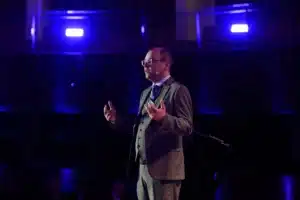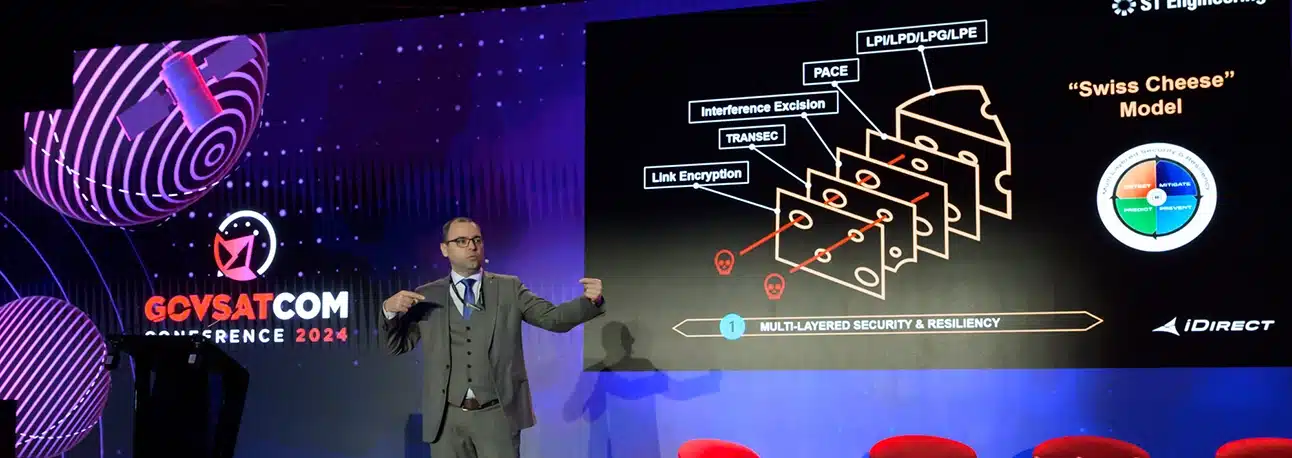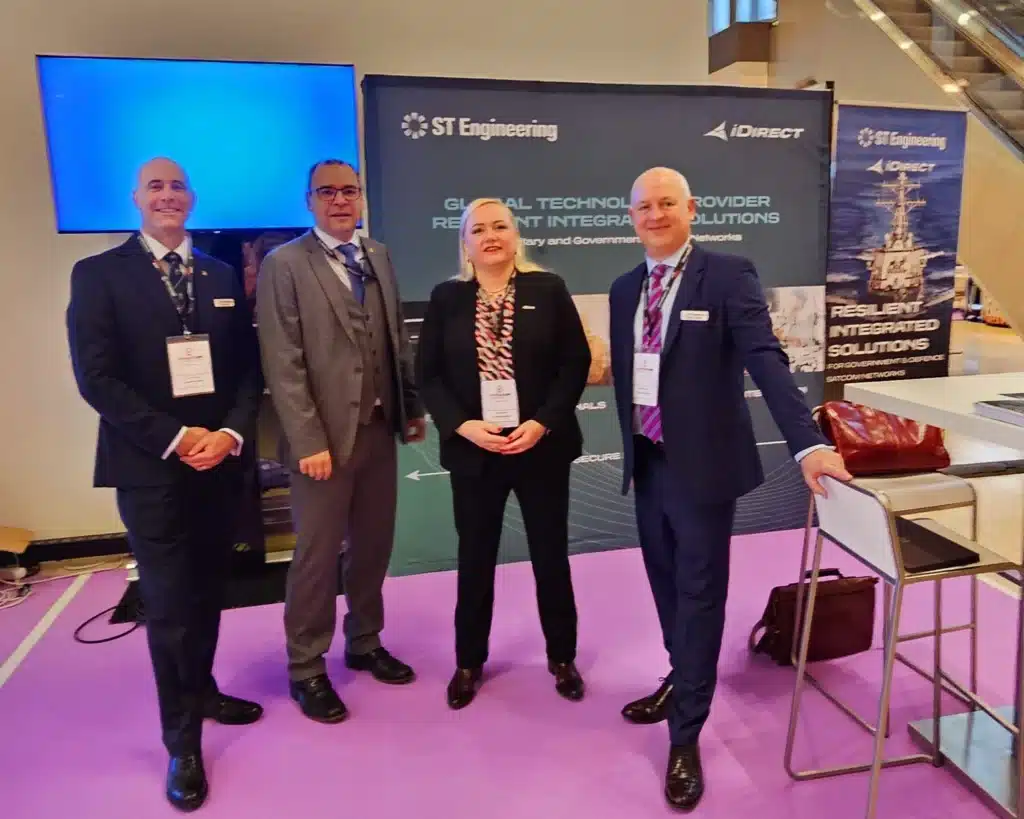By Koen Willems, VP EU/NATO Programs & Government Relations
Software is Central
GovSatCom always acts as a bellwether for the government and defence sector, indicating the industry trends and direction. This year, a strong, recurring theme of the
This set the scene for Koen Willems, our VP EU/NATO Programs and Government Relations who presented his keynote on MilSatcom digitalization.
With the new capabilities being prepared for the space segment, the ground segment is undergoing a major transformation, primarily due to the growing convergence between space-ground-end-user segments. For ground users, this entails getting to grips with new disruptive technologies as well as standardization efforts. It means a need for increased interoperability and standardization to allow for orchestration of services across both satellite and terrestrial-based networks. Also, closely tied together is the new requirement for 5GNR, virtualization and cloud efforts to enable satcom to integrate itself into the bigger connectivity picture. Finally, this also means the requirement for higher security and resiliency, and we are already seeing collaborative efforts in Europe in the shape of initiatives such as the European Protected Waveform (EPW) and the upcoming EU IRIS2 constellation.
It’s vital that ground segment architecture takes these requirements into account to enable it to leverage next generation multi-orbit constellations.
The Benefits
The transition to these next-generation networks brings with it some key advantages to increase the efficiency and flexibility of your operations.
Benefit 1: Security and Resiliency
We live in a world that is mired in instability. Given the current geopolitical context, security and resiliency of our defense networks is paramount. Next generation networks offer a level of unprecedented multi-layered security and resiliency that address the orchestration of security technologies working together to stop different types of threats that could hamper the continuation of operations.
We like to describe this as a ‘Swiss Cheese Model’ where a slice of cheese represents one type of security technology. It might solve some security issues, but it will not be able to stop all the threats due to the holes in the cheese. For example, encryption will not stop any interference or jamming issues. However, if you put all the slices of cheese together the holes will not penetrate end-to-end. Therefore, you need security technologies that work in orchestration, and you need a PACE plan to increase the availability of the links.
What’s PACE? PACE stands for Primary – Alternative – Contingency – Emergency and is a redundancy plan that can be applied on both gateway side, via geo-redundancy as well as on the remote side via network diversity switching to other satellites, transponders or constellations.
Benefit 2: Moving towards a Digital Gateway
The entire satellite industry is in the midst of digital transformation and to achieve this, it is embracing standards. The Digital Intermediate Frequency Interoperability (DIFI) Consortium was formed to enable the digital transformation of space, satellite, and related industries by providing a simple, open, interoperable Digital IF/RF standard that replaces the natural interoperability of analog IF signals and helps prevent vendor lock-in. Leveraging the DIFI standard results in the simplification of the signal management at the teleport as well as improved flexibility for routing the signal to and from the growing number of antennas at the teleport. The standardization will result in flexible delivery over IP connectivity and improved and simplified maintenance and reduction of RF complexity at the teleport.
Standardization also feeds into the increased amount of virtualization and cloudification occurring in the satellite sector at present as it makes a move towards the cloud which brings a host of benefits to both providers and users.
Through cloud-based services, providers and satellite operators can gain privileged access to a complete family of networking applications and can then package them into advanced service offerings that will provide customers, not only satellite connectivity, but also cybersecurity, hybrid network, application-based QoS, and end-to-end service orchestration.
Benefit 3: The Modem Side
On the modem side, we are seeing similar moves towards digitalization and cloudification. By implementing a digital interface with the RF chain, it offers the immediate advantage of positioning your receiving antenna further away and also means that the cabling produces less interference with other technologies, for example with radars on navy vessels.
Looking at the baseband side, the remote modem is also undergoing different changes as it moves from a software-defined (SD) modem on dedicated hardware ultimately towards a virtual modem that be running on an edge cloud device. The edge cloud could also partially be used to run local applications to reduce the traffic over the satellite link and increase the efficiency.
4-Series Meets SWaP Requirements
The good news is that such an SD modem already exists today. The 4-Series SDR modem from iDirect Government fits in the palm of your hand. This means that this tiny modem can fit into smaller and flat panel antennas, weighs less, consumes less power and is more powerful than the previous generation of modems. The modem also has the flexibility of deployment in a multi-orbit networks and operates multiple waveforms on the same hardware. The analog and digital interface allows the end-user to evolve from a current installed base of analog (L-band) terminals towards terminals with digital interfaces. Finally, the 4-series modems have the security features onboard to mitigate many threats such as TRANSEC and CSIR™ interference excision technology.
It’s All about the Journey
We know that this is a great deal of transformation and it’s not going to happen overnight. There’s a lot of groundwork to do. However, the benefits of moving towards next-generation multi-orbit constellations and gateways, with new disruptive ground segment technologies will be numerous and include interoperability, flexibility, lower costs and the ability to orchestrate services across multiple networks.
But remember, it’s all about the journey. You can do this step by step. You don’t need to do that in one go. You can take your time and make these changes as time and budget allow, and you can take advantage of advancements as and when they happen.
Would you like to learn more?
Register for ST Engineering iDirect’s Defence Technology Day on April 23 at the Waterloo 1815 Memorial site near Brussels where we will discuss and demo these elements in more detail.

